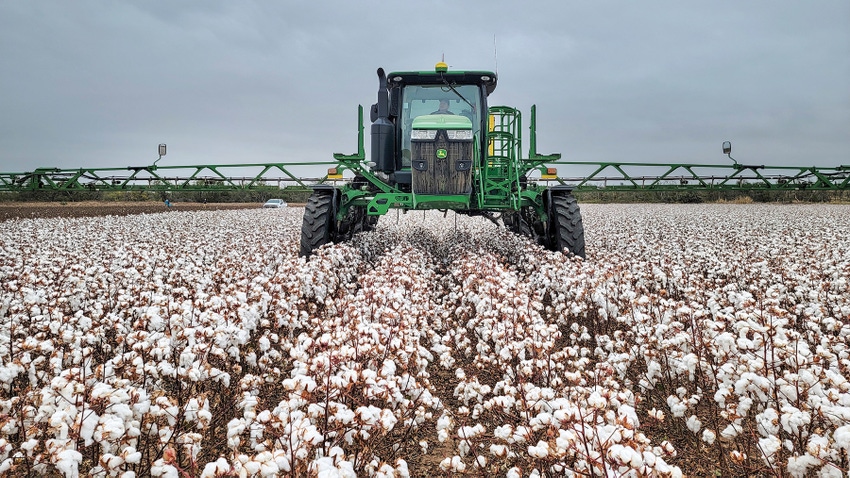
Cotton harvest aid management has been described as much art as science with numerous factors affecting how effective applications can be.
Ben McKnight, assistant professor and Extension state cotton specialist, Texas A&M AgriLife, College Station, says proper timing is the first of three key priorities for effective harvest preparation.
McKnight discussed factors that affect successful harvest aid management at the 34th Annual Texas Plant Protection Association Annual Meeting in Bryan back in December.
“Consider crop maturity,” McKnight said. “What's the growth stage? Do we have harvest machines available and ready? What are the weather conditions, not only now, but five to 10 days down the road?”
Good spray coverage is the second priority, he said. "Use a high application volume, 10 gallons per acre with a ground rig and 5 gallons by air, at a minimum. Increasing application volume can enhance coverage and product activity."
Product selection is the third priority. “Identify the best harvest aids products to use for the given environmental conditions.” McKnight said several factors will improve harvest aid performance.
“Warm, calm, sunny weather is ideal. Soil moisture level should be relatively low but sufficient to maintain somewhat active growing conditions without drought and moisture stress.
“You want cotton leaves uniformly expanded on the plant with minimal secondary growth. Plants should have a high percentage of bolls already opening and leaves that are naturally shedding.
“On the flip side, watch out for environmental conditions that decrease harvest aid performance. Those include:
Conditions under 60 degrees Fahrenheit for prolonged periods;
Wet weather that puts plants in a highly vegetative growth stage;
Plants under severe moisture stress, drought type conditions;
Plants with rank growth due to high moisture and high nitrogen levels; and
Improper calibration of application equipment.
McKnight said weather will always be a factor but watching forecasts, having equipment ready, products selected, and a plan in place will give a bit of an edge to the science of harvest aid management.
About the Author(s)
You May Also Like






